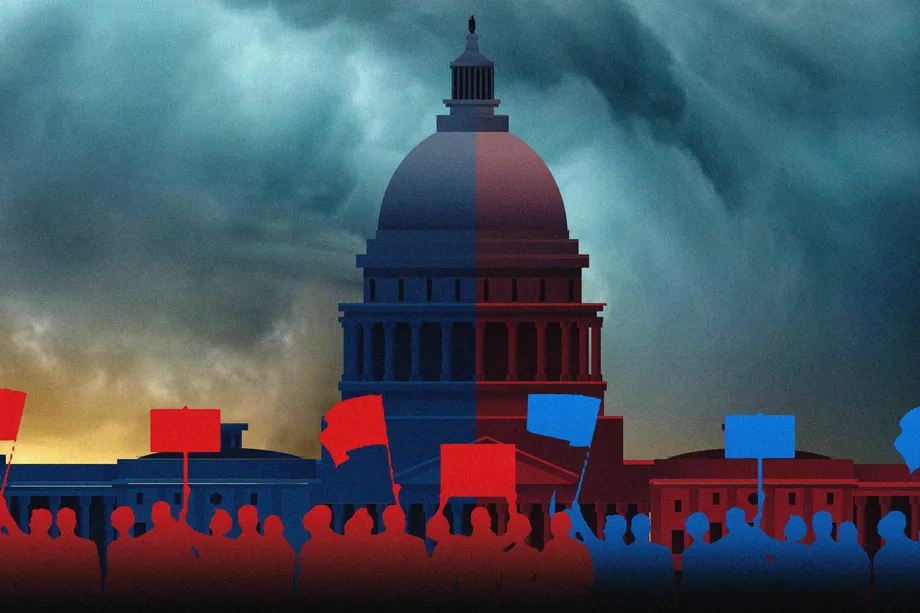
Two weeks ago, more than 100 nonpartisan “scholars of democracy” signed a “statement of concern” regarding several Republican-led state legislatures passing restrictive voting laws. The catalyst for this legislation were the baseless claims of election fraud which have been circulating in the right-wing media since before the election even happened. Then, this past Monday, former President Barack Obama stated “if you watch Fox News, you perceive a different reality than if you read The New York Times.” Many Americans––on the right and the left––certainly agreed.
When it comes to political news, half of conservative Republicans don’t trust The New York Times and 77% of liberal Democrats don’t trust Fox News. More strikingly, Fox News is the only organization that a majority of Republicans trust.
It’s fair to say that the influence of Fox News on the Republican party is unique. In just two and a half decades, Fox went from a startup to the most-watched cable news channel in the country, revolutionizing American news––and American politics––in the process.
Just how influential is Fox?
It’s a complex question, but two impressive studies have attempted to quantify the effect of Fox News on American politics.
The first, published in the American Journal of Political Science in 2015, took a closer look at the gradual spread of Fox News around the country from 1998 to 2002. Throughout this “patchy rollout,” congressional districts which were introduced to Fox News first weren’t politically distinct from those receiving it a few years later. Yet after Fox News came to a district, representatives’ voting records became more conservative on divisive issues close to elections.
Researchers in the second study, published by Stanford University in 2017, looked at how elections were affected in places where Fox News was randomly featured more prominently in cable listings. They discovered that the particular channel airing Fox News is arbitrary, but when the channel number was lower, viewership increased. Using this as a natural experiment, they estimated Fox News single-handedly raised the Republican presidential candidate’s share of the vote by a substantial 3.59% in 2004 and 6.34% in 2008.
This type of partisan power is deeply concerning. Over the 25 years Fox News has existed, polarization has increased dramatically, and it’s creating different realities. Within just nine days after the presidential race was called for Joe Biden, the network aired election-related conspiracy theories at least 774 times. Six months after the 2020 election, some 70% of Republicans refuse to believe that Joe Biden legitimately beat Donald Trump.
How can we address media-driven political polarization?
If Fox News were to moderate its views, that would likely have some effect, but there is no clear path back to moderation in the cable news industry as a whole. Arguably, Fox News’ greatest legacy is opening Pandora’s box for hyperpartisan commentary on television 25 years ago.
Following the rise of Fox, MSNBC entered the fray as a reliably left-wing alternative, with scripts just as far to the left as Fox is to the right. More recently, Fox has been joined by One America News and Newsmax, both of which attempt to win over Fox viewers by leaning more heavily into personal attacks and conspiracy theories. Meanwhile, the online media landscape has been even further chopped up by right and left-wing media outlets. Even local news stations have been bought up by partisans, with the right-wing Sinclair media empireoperating 192 stations which reach 39% of Americans.
According to analysis by Reuters, the American media landscape is the most polarized in the world, and social media is only making matters worse. Hyperpartisanship isn’t just a right-wing problem; it’s affecting all of us.
Unfortunately, a simple fix is elusive. Trust in the media is highly partisan, as is fact checking and deplatforming extremists. One popular approach to partisanship––introducing individuals to commentary from the opposition––doesn’t seem to moderate Democrats’ or Republicans’ opinions. In fact, Republicans actually went further to the right during the largest study testing the effects of exposure to perspectives from the other side.
However America manages to solve its partisanship problem, improving the media environment will be essential. It’s encouraging at least that 88% of likely voters agree that “compromise and common ground should be the goal for political leaders.” American voters clearly desire a calmer political atmosphere, which may be America’s only hope of achieving one.
The issue? That same poll asked if they agreed with the statement “I’m tired of leaders compromising my values and ideals. I want leaders who will stand up to the other side.” 87% did.



